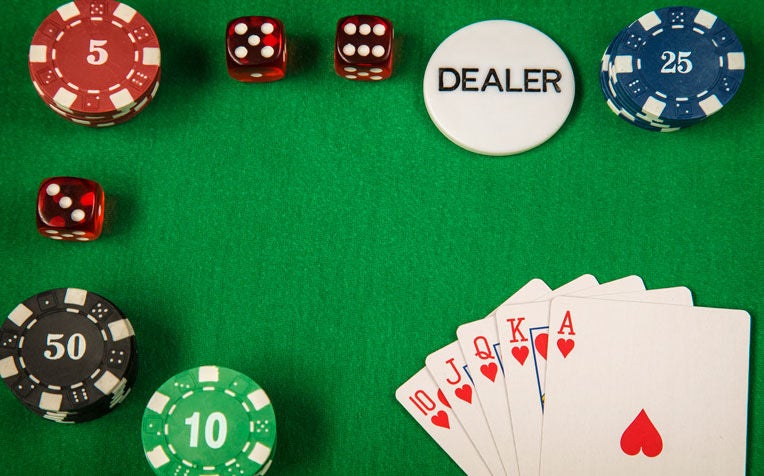
The National Addictions Management Service (NAMS) by the Institute of Mental Health (IMH) in Singapore provides therapy to those who suffer from problem gambling.
A hundred and fifty thousand dollars. That was the total gambling debt that Mdm Karen Chan*, 65, racked up over a two-year period by frequenting floating casinos with her ex-colleagues.
Mdm Chan started gambling after she retired. With time on her hands, and with no real interests or friends outside of work, she had found life boring and meaningless. After winning several thousand dollars during her first few visits, Mdm Chan felt a sense of accomplishment and control over her life again. Then, she started losing. Before long, she had exhausted her savings and maxed out her credit cards.
Soon, winning or losing became unimportant. She was addicted to the rush she got from gambling, and was spending a great deal of time in casinos. She was well and truly an addict.
Fortunately, Mdm Chan had a caring daughter who persuaded her to seek help from the National Addictions Management Service (NAMS), which was set up by the Institute of Mental Health (IMH) in Singapore.
NAMS has helped pathological gambling addicts – as well as those addicted to drugs, alcohol, the Internet, and other behaviours – to improve their conditions with treatment. It also runs a dedicated outpatient clinic for adolescents, private and subsidised patients, and an inpatient ward for patients who need detoxification and rehabilitation.
With treatment, Mdm Chan began to understand that her gambling addiction was a result of the deep loneliness and isolation that overwhelmed her as she adjusted to life after retirement.
In group counselling sessions, Mdm Chan learnt how to overcome temptation, and to recognise the triggers of her addictive behaviour. For example, she learnt to say “no” tactfully to friends who invited her to floating casinos, to call a friend for support when the going got tough, and to avoid places where she would be tempted to gamble.
With help from NAMS, Mdm Chan has not gambled for two years now. She leads a more fulfilling life and enjoys better relationships with her family members.
Sustainable results for addiction therapy
Mdm Chan is just one of many people who have sought help from NAMS to curb their gambling and other addictions. From April 2011 to March 2012, the two helplines that NAMS runs – the National Problem Gambling Helpline and the All Addictions Helpline 6-RECOVER – received 23,000 calls for help. Of those who eventually sought treatment at NAMS, 356 were for gambling, 520 for drugs, and 418 for alcohol.
According to the NAMS website, after three months of treatment, 76 per cent of those who sought help for gambling addiction saw improvement, while 68 per cent of patients with alcohol addiction said they had quit or reduced their drinking. According to IMH, among patients successfully reassessed at six and 12 months, these initial observed benefits were sustained for up to a year, as noted during the one-year observation period.
NAMS uses an integrated, multi-disciplinary approach that combines medical and psychosocial therapy. A psychiatrist first assesses the patient for psychiatric conditions such as depression, anxiety, suicidal tendencies and any other addictive disorders. He or she then draws up a treatment plan, or refers the patient to a psychologist if necessary.
A counsellor provides psychosocial therapy during individual counselling sessions, using various approaches like motivational interviewing, cognitive behavioural therapy, and active case management. Patients and their families are encouraged to attend NAMS’ evening group counselling programmes, which consist of psycho-educational and support groups.
Two phases of treatment take place over 21 days – detoxification (one week) and rehabilitation (two weeks). Patients with gambling addictions undergo only the rehabilitation phase. Patients can also opt for acupuncture treatment at $200 for 10 sessions, which reduces the severity of withdrawal symptoms, pain, cravings, and symptoms of comorbid disorders such as mood disorder and anxiety.
Rates for addiction treatment at NAMS
Like other health-care institutions, the National Addictions Management Service (NAMS) offers a range of rates for private and subsidised patients who are citizens, subsidised patients who are permanent residents, and nonresidents. Adolescents pay a separate set of rates.
For instance, subsidised patients pay $31 for their first consultation, which can be with a registrar, associate consultant, consultant or senior consultant. Private patients pay between $75 (to see a registrar or associate consultant) and $105 (for a senior consultant). First-visit rates for non-residents range from $97.50 to $136.50.
Subsidised counselling fees range from $6 to $21. Full fees range from $14 to $65. These do not include the costs of medication, laboratory tests or other investigations.
Medisave and MediShield cannot be used to pay for outpatient services, but can be used for inpatient bills from NAMS. Medifund, the government endowment fund for needy Singaporeans who cannot afford even subsidised medical expenses, is available to eligible Singapore citizens. All applications must be approved by the Medifund Committee. People with difficulty paying their medical bills can approach a medical social worker for help.
*The patient’s name has been changed to protect her privacy
Ref: R14
Contributed by














 Get it on Google Play
Get it on Google Play